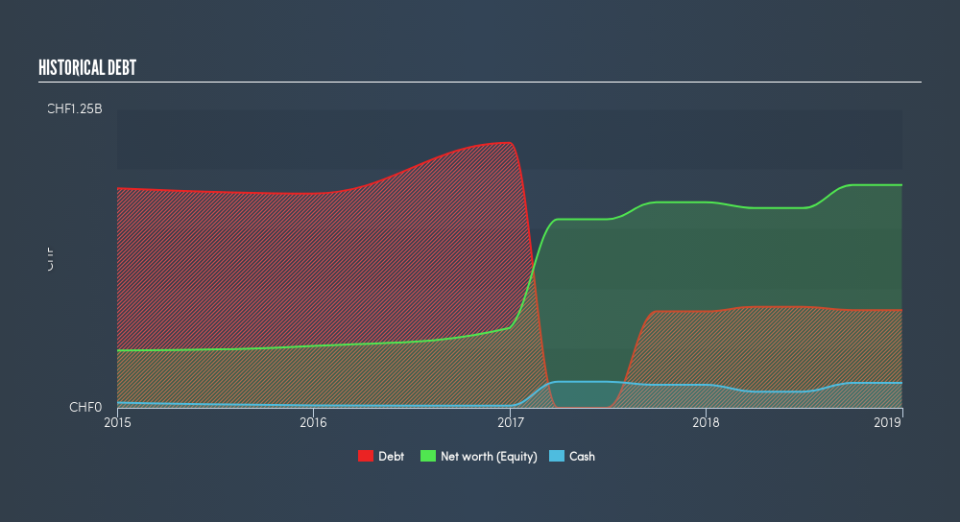Galenica AG (VTX:GALE): Time For A Financial Health Check

Want to participate in a short research study? Help shape the future of investing tools and you could win a $250 gift card!
Investors are always looking for growth in small-cap stocks like Galenica AG (VTX:GALE), with a market cap of CHF2.5b. However, an important fact which most ignore is: how financially healthy is the business? Assessing first and foremost the financial health is crucial, since poor capital management may bring about bankruptcies, which occur at a higher rate for small-caps. The following basic checks can help you get a picture of the company's balance sheet strength. Nevertheless, these checks don't give you a full picture, so I recommend you dig deeper yourself into GALE here.
GALE’s Debt (And Cash Flows)
Over the past year, GALE has maintained its debt levels at around CHF409m – this includes long-term debt. At this stable level of debt, the current cash and short-term investment levels stands at CHF105m , ready to be used for running the business. On top of this, GALE has generated CHF174m in operating cash flow over the same time period, resulting in an operating cash to total debt ratio of 42%, signalling that GALE’s debt is appropriately covered by operating cash.
Does GALE’s liquid assets cover its short-term commitments?
Looking at GALE’s CHF443m in current liabilities, it seems that the business has maintained a safe level of current assets to meet its obligations, with the current ratio last standing at 1.77x. The current ratio is calculated by dividing current assets by current liabilities. Generally, for Healthcare companies, this is a reasonable ratio since there's a sufficient cash cushion without leaving too much capital idle or in low-earning investments.
Can GALE service its debt comfortably?
GALE is a relatively highly levered company with a debt-to-equity of 44%. This is somewhat unusual for small-caps companies, since lenders are often hesitant to provide attractive interest rates to less-established businesses. We can check to see whether GALE is able to meet its debt obligations by looking at the net interest coverage ratio. A company generating earnings before interest and tax (EBIT) at least three times its net interest payments is considered financially sound. In GALE's, case, the ratio of 61.02x suggests that interest is comfortably covered, which means that lenders may be willing to lend out more funding as GALE’s high interest coverage is seen as responsible and safe practice.
Next Steps:
GALE’s high cash coverage means that, although its debt levels are high, the company is able to utilise its borrowings efficiently in order to generate cash flow. Since there is also no concerns around GALE's liquidity needs, this may be its optimal capital structure for the time being. I admit this is a fairly basic analysis for GALE's financial health. Other important fundamentals need to be considered alongside. I suggest you continue to research Galenica to get a more holistic view of the small-cap by looking at:
Future Outlook: What are well-informed industry analysts predicting for GALE’s future growth? Take a look at our free research report of analyst consensus for GALE’s outlook.
Valuation: What is GALE worth today? Is the stock undervalued, even when its growth outlook is factored into its intrinsic value? The intrinsic value infographic in our free research report helps visualize whether GALE is currently mispriced by the market.
Other High-Performing Stocks: Are there other stocks that provide better prospects with proven track records? Explore our free list of these great stocks here.
We aim to bring you long-term focused research analysis driven by fundamental data. Note that our analysis may not factor in the latest price-sensitive company announcements or qualitative material.
If you spot an error that warrants correction, please contact the editor at editorial-team@simplywallst.com. This article by Simply Wall St is general in nature. It does not constitute a recommendation to buy or sell any stock, and does not take account of your objectives, or your financial situation. Simply Wall St has no position in the stocks mentioned. Thank you for reading.


